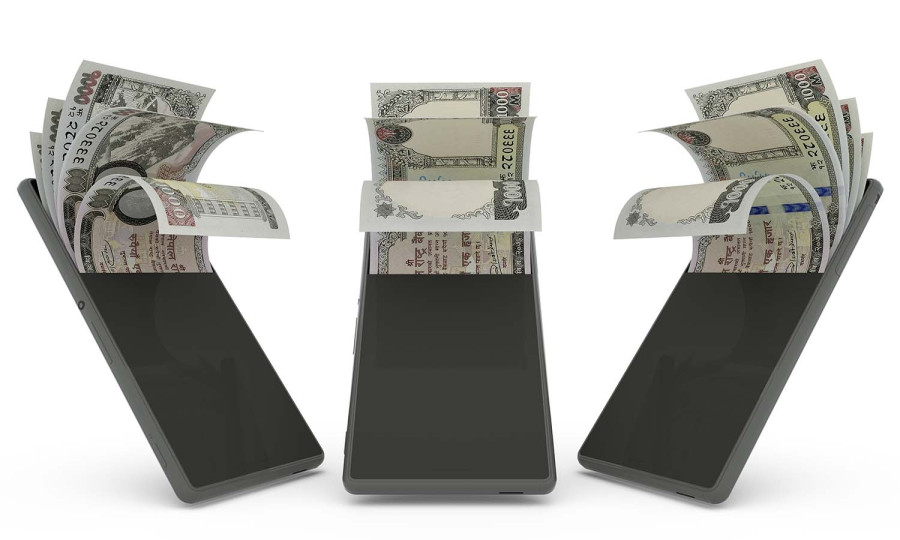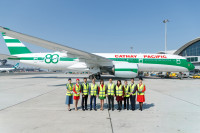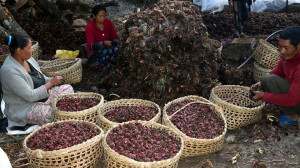Money
6 percent of Nepali adults use mobile money, 35 percent save formally
More adults in Nepal are saving, yet digital finance tools are underused, especially among women.
Post Report
More than 80 percent of Nepali adults own a mobile phone, but only 6 percent use mobile money accounts. Yet, this small percentage is already influencing a growing trend in formal savings, according to the World Bank’s latest Global Findex 2025 report.
The report highlights that a record number of adults now have access to bank or other financial accounts across low- and middle-income countries.
Mobile phone technology, it says, has been a critical driver of this change, with 10 percent of adults in developing economies using mobile money to save regularly.
In Nepal, 35 percent of adults reported saving money, setting aside parts of their income for future needs.
These findings are based on the adult population of 20.74 million.
While account ownership has risen globally, Nepal's digital financial engagement is still developing.
According to the report, 19 percent of Nepali adults made digital payments, 14 percent own a debit card, and only 5 percent use it.
A gender gap is evident in card ownership: 17 percent of Nepali men have a debit or credit card compared to 11 percent of women.
The report also reveals how digital tools are used: 18 percent of adults in Nepal accessed their financial institution accounts via mobile phone or the internet. Around 13 percent used digital platforms to make payments or purchases and to send or receive money.
Additionally, 45 percent of adults deposited into financial institutions, while 46 percent made withdrawals.
Barriers to financial inclusion persist. Some 12 percent of adults said they lacked an account because financial institutions were too far away, and 17 percent cited high service costs.
Bankers suggest mobile technology could help bridge this gap and expand access to the unbanked population.
Remittances are increasingly being digitised. The report found that 86 percent of Nepali adults who sent domestic remittances used a financial account.
According to the World Bank, boosting personal savings through formal institutions strengthens national financial systems by making more capital available for investment and innovation.
“Financial inclusion has the potential to improve lives and transform entire economies,” said World Bank Group President Ajay Banga. “Digital finance can convert this potential into reality, but several ingredients need to be in place.”
Banga said the World Bank is helping countries expand access to digital identification systems, improve social protection via digital cash transfers, and modernise payment systems by removing regulatory barriers.
“We’re working to ensure people and businesses have the financing they need to innovate and create jobs,” he added.
The Global Findex is widely regarded as the most comprehensive database on global access to financial services, from payments to savings and borrowing. It marks a significant milestone: nearly 80 percent of adults worldwide now own an economic account, up from just 50 percent in 2011.
Still, 1.3 billion adults globally remain unbanked. Of these, 900 million own a mobile phone, including 530 million who have smartphones—an untapped opportunity for digital financial inclusion.
The 2025 report also shows progress in narrowing the gender gap.
Globally, 81 percent of men and 77 percent of women now own a financial account. In low- and middle-income countries, women’s account ownership nearly doubled over a decade, from 37 percent in 2011 to 73 percent in 2024.
Yet gaps remain. Thirty percent of unbanked adults globally said they didn’t have an account because a family member already did. Women in several countries more frequently cited this reason. In Türkiye, for example, 39 percent of unbanked women gave this reason, compared to 25 percent of men.
Nepal, Algeria, Bolivia, Pakistan, and Tunisia also showed similar gender disparities. Women were more likely to report not having an account because a household member already owned one. In contrast, in China and India, men and women were equally likely to give this reason.
For the first time, Findex included data on mobile phone ownership and internet use. The World Bank’s Digital Connectivity Tracker 2025 shows that globally, 86 percent of adults now own a mobile phone, including 68 percent with a smartphone.
This rise in mobile phone usage drives digital transactions and introduces new risks.
Only about half of the 4 billion adults in low- and middle-income economies who own mobile phones use passwords to secure their devices.
Still, digital payments are increasing.
In 2024, 42 percent of adults in developing countries made in-store or online payments using mobile phones or cards, up from 35 percent in 2021.
Receiving government payments through accounts is becoming more common, too. Three-quarters of adults who receive public benefits and half of wage earners now get their payments directly into accounts.
This reduces theft and ensures that payments reach the right person.
For women, financial accounts are not just about money—they can enable independence and empowerment.
In the Philippines, women who used commitment savings products—tools designed to encourage regular deposits—gained more decision-making power within their households. Their spending shifted toward practical goods like washing machines.
In India, a government welfare programme that reached over 100 million people had transformative effects when benefits were paid directly into women’s accounts instead of those belonging to male heads of households. This not only improved women’s financial control but also challenged traditional gender norms and encouraged more women to seek employment.
A similar impact was observed in Nepal, where women-led households that received free savings accounts increased spending on nutritious food by 15 percent.
The World Bank report emphasises that digital financial tools can open opportunities for millions—particularly women—and foster economic resilience and growth when paired with inclusive policies.




 13.05°C Kathmandu
13.05°C Kathmandu














